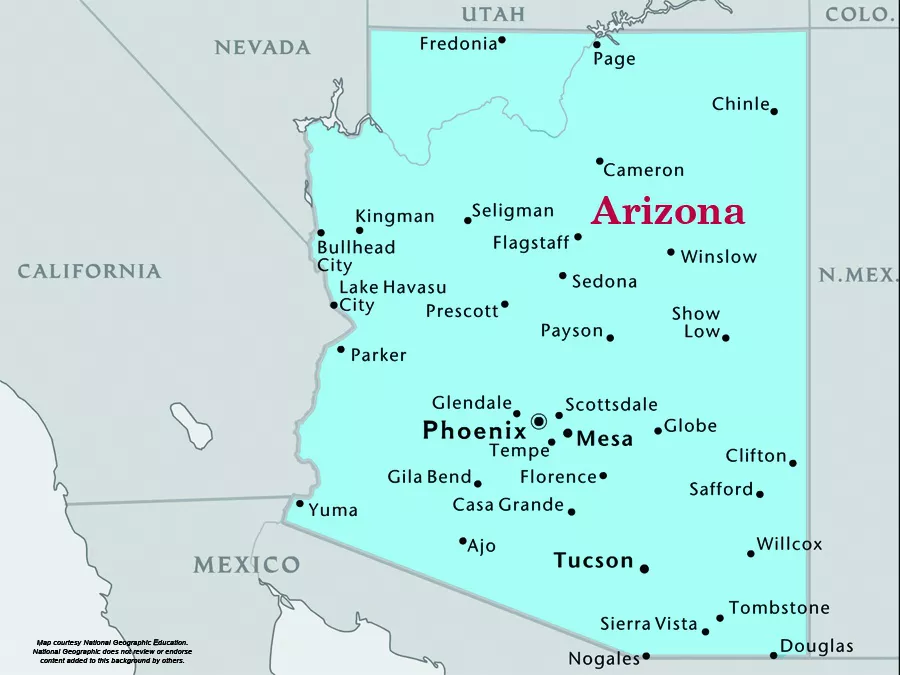Arizona is a diverse and dynamic state in the southwestern United States. From its arid deserts to its forested mountains, Arizona offers a wide range of environments and communities. As of recent data, there are 467 cities and towns in Arizona . Each of these municipalities contributes uniquely to the state’s geography, culture, economy, and ecology.
Geographical Overview of Arizona
Arizona is located in the southwestern region of the United States, sharing borders with California, Nevada, Utah, New Mexico, and Mexico. The state’s geography is varied, featuring deserts, mountains, and forests.
Major Geographical Regions
- Sonoran Desert: Covers the southern part of the state, including cities like Phoenix and Tucson.
- Colorado Plateau: Located in the northern part of Arizona, encompassing areas like Flagstaff and the Grand Canyon.
- Mogollon Rim: A significant geological feature that separates the high country of the Colorado Plateau from the lower deserts.
These regions influence the climate, vegetation, and lifestyle of the cities within them.
Cultural Diversity Across Arizona’s Cities
Arizona’s cities are rich in cultural heritage, reflecting a blend of Native American, Hispanic, and Anglo-American influences.
Native American Heritage
Arizona is home to 22 federally recognized Native American tribes. Cities like Window Rock and Tuba City are centers of Navajo culture, featuring museums, cultural centers, and traditional events.
Hispanic Influence
Southern Arizona cities, such as Tucson and Nogales, have strong Hispanic communities. This influence is evident in architecture, festivals, and cuisine.
Arts and Festivals
Cities like Scottsdale and Sedona are known for their vibrant arts scenes, hosting numerous galleries and annual festivals that attract visitors from around the world.
Economic Landscape of Arizona’s Cities
Arizona’s economy is diverse, with different cities specializing in various industries.
Technology and Innovation
Cities like Chandler and Gilbert have become hubs for technology and innovation. Companies in these areas focus on advanced manufacturing, aerospace, and biotechnology .
Tourism and Hospitality
Tourism is a significant economic driver in cities like Sedona and Flagstaff, known for their natural beauty and outdoor activities. Phoenix and Scottsdale attract visitors with luxury resorts, golf courses, and cultural events.
Agriculture and Mining
In more rural areas, agriculture and mining remain vital. Cities like Yuma are known for agricultural production, while others like Globe have histories rooted in mining.
Ecological Aspects of Arizona’s Cities
Arizona’s ecological diversity is reflected in its cities, each adapting to their unique environments.
Desert Adaptations
Cities in the Sonoran Desert, such as Phoenix and Tucson, have developed strategies to cope with extreme heat and limited water resources. Urban planning includes xeriscaping and water conservation measures.
Forested Regions
Northern cities like Flagstaff are situated in forested areas, with ecosystems that support different wildlife and recreational activities. Flagstaff is also recognized as the world’s first International Dark Sky City, promoting efforts to reduce light pollution .
Environmental Challenges
Rapid urbanization in some cities has led to environmental concerns, such as water scarcity and habitat disruption. Efforts are ongoing to balance development with ecological preservation.
Conclusion
Arizona’s 467 cities and towns each contribute to the state’s rich tapestry of geography, culture, economy, and ecology. Understanding the unique characteristics of these municipalities provides insight into the diverse experiences and opportunities available throughout the state.

